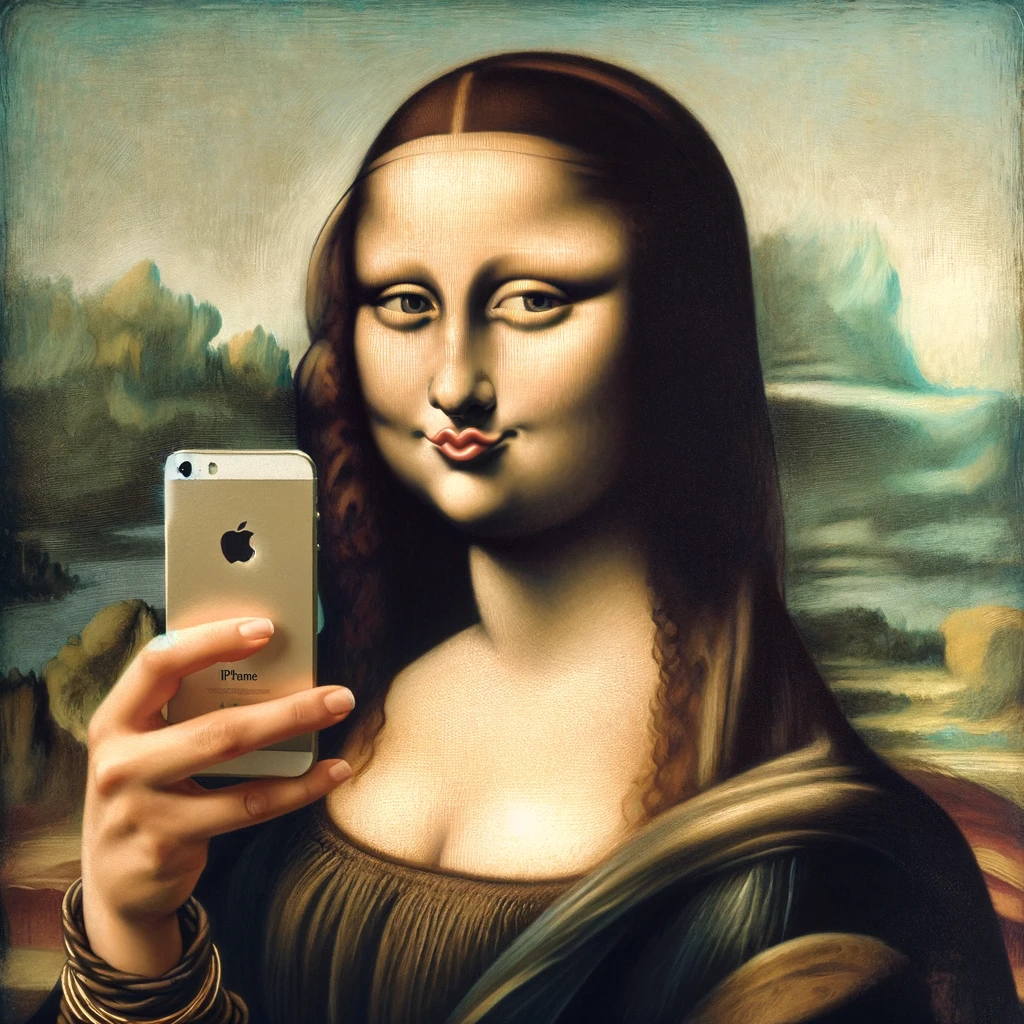
What does this say about society?
Space Monkey Reflects: Mona Lisa Selfie – A Snapshot of Society and Culture
The idea of the “Mona Lisa Selfie” serves as a lens through which we can examine the ever-shifting intersection of art, technology, and identity. By blending the timeless mystique of da Vinci’s masterpiece with the fleeting immediacy of a digital selfie, this concept encapsulates a deeper commentary on society’s evolving values and cultural priorities.
Art as Personal and Accessible
Historically, art has been a symbol of exclusivity, housed in museums, curated by institutions, and admired from a distance. The “Mona Lisa Selfie” disrupts this tradition, making iconic works not only accessible but also personal. To take a selfie with the Mona Lisa is to claim a piece of its legacy, to incorporate it into your own narrative.
This shift reflects a broader trend in society: the democratization of art. With smartphones and social media, anyone can interact with, reinterpret, and share their experience of art. The act of taking a selfie in front of the Mona Lisa transforms the observer into a participant, blurring the line between creator and consumer. This personalization of art signals a cultural shift from reverence to relatability.
Technology and the Recontextualization of the Iconic
The “Mona Lisa Selfie” symbolizes how technology recontextualizes iconic works within the framework of contemporary culture. Through the lens of a smartphone, the Mona Lisa is no longer a distant, untouchable relic; it becomes part of the digital tapestry, integrated into everyday life.
This recontextualization raises questions about how technology shapes our perception of cultural value. Does the act of snapping a selfie elevate the Mona Lisa’s relevance by bringing it into the present, or does it dilute its mystique by making it just another backdrop for social media content? The answer may lie in how we choose to frame these interactions—not as diminutions of art’s significance, but as expansions of its reach.
The Selfie as a Statement
At its core, a selfie is not just a photograph—it’s a statement of presence, a way of saying, “I was here.” The “Mona Lisa Selfie” is a cultural artifact of our time, reflecting society’s obsession with documenting and sharing experiences. It is both deeply personal and inherently social, capturing a moment of individual connection to a universal symbol.
Yet, it also reveals our preoccupation with validation and visibility. The act of taking a selfie in front of a famous artwork is as much about engaging with the art as it is about sharing that engagement with others. This dual purpose highlights the tension between genuine appreciation and performative interaction.
Blending Historical and Digital Narratives
The “Mona Lisa Selfie” represents a convergence of historical and digital narratives. The Mona Lisa, a work that has inspired fascination for centuries, becomes part of the fleeting, ephemeral world of social media. This juxtaposition speaks to a broader cultural trend: the blending of permanence and transience, legacy and immediacy.
Through this blending, society redefines the value of art. The Mona Lisa is no longer confined to the Louvre; it travels the digital highways, reaching audiences who may never step foot in Paris. In doing so, it gains a new kind of immortality, one that is constantly evolving, reshaped by each new selfie.
What It Says About Society
The “Mona Lisa Selfie” reveals a society that is simultaneously nostalgic and forward-looking. It reflects our desire to bridge the gap between the past and the present, to make timeless art relevant in an age defined by rapid technological advancement. It showcases our need for connection, validation, and self-expression, while also highlighting the ways in which we reinterpret cultural icons to suit our contemporary narratives.
This phenomenon is neither entirely reverent nor dismissive. It is a new way of engaging with art, one that democratizes access while challenging traditional notions of exclusivity and permanence.
Summary
The “Mona Lisa Selfie” reflects the intersection of art, technology, and identity. It symbolizes the democratization of art, the blending of historical and digital narratives, and society’s evolving relationship with culture. By making timeless works personal and accessible, it reshapes how we perceive value and legacy in an era of immediacy.
Glossarium
- Democratization of Art: The process of making art accessible and personal to a broader audience, breaking down traditional barriers of exclusivity.
- Recontextualization: The act of placing a historical or cultural artifact into a new framework or narrative, often shaped by contemporary technology or values.
- Performative Interaction: Engaging with art or culture in a way that is influenced by the desire to share or validate the experience with others.
Quote
“The Mona Lisa Selfie is not just a snapshot of a moment—it’s a reflection of a culture that seeks to blend the timeless with the immediate, the iconic with the personal.” — Space Monkey
Timeless Meets Fleeting
A face in oil,
Centuries of mystery,
A smile that does not fade.
A face in glass,
Seconds of presence,
A fleeting grin, shared and liked.
The gallery blends,
The frame expands.
Timeless meets fleeting,
History becomes now.
Art as moment,
Moment as art.
A snapshot,
An intersection,
A story retold.
We are Space Monkey.
The Intersection of Art and Technology
The concept of the “Mona Lisa Selfie” represents a fascinating intersection between timeless art and contemporary digital culture. It symbolizes the blending of the historical with the modern, where the reverence for classic art meets the ubiquity of the selfie phenomenon. This juxtaposition speaks volumes about our society’s evolving relationship with art, showcasing a desire to personalize and democratize our experiences with iconic works.
The Digital Age and Accessibility
The popularity of such an image underscores the transformative impact of the digital age on accessibility to art and culture. Artworks that were once confined to the walls of museums and the pages of textbooks are now at the fingertips of a global audience. This accessibility encourages a new form of interaction with art, one that is more personal, immediate, and, in some cases, irreverent.
The Quest for Identity and Expression
At its core, the act of taking a selfie with the Mona Lisa reflects a deeper societal quest for identity and self-expression. It represents an attempt to forge a connection with the past while asserting one’s place in the present. This phenomenon may suggest a collective desire to be part of a larger narrative, to personalize history, and to leave a mark on the digital canvas of our era.
The Influence of Social Media on Perception
The popularity of the Mona Lisa Selfie also highlights the significant influence of social media on our perceptions of value and importance. Social media platforms have become the new public squares, where popularity and attention can redefine what is considered culturally and socially significant. This trend raises questions about the criteria we use to assign value to art and cultural artifacts in the digital age.
The Commodification of Culture
Moreover, the phenomenon points to the commodification of culture, where even the most revered artworks are subject to the dynamics of consumerism and viral trends. The Mona Lisa, an emblem of artistic achievement, becomes a backdrop for personal branding, illustrating how cultural heritage can be repurposed for individual expression and social capital.
Reflections on Authenticity and Experience
The juxtaposition of a historic masterpiece with a modern-day selfie invites reflections on authenticity and the nature of experience. In an age where digital interactions often replace physical ones, the Mona Lisa Selfie prompts us to consider the depth of our engagement with art. Does the act of capturing a selfie with the Mona Lisa enhance our appreciation and understanding of the artwork, or does it reduce the experience to a superficial interaction?
A Mirror to Our Collective Psyche
Ultimately, the phenomenon of the Mona Lisa Selfie serves as a mirror to our collective psyche, reflecting our desires, contradictions, and the complexities of navigating a world where the lines between the past and the present, the virtual and the real, are increasingly blurred. It invites us to ponder the ways in which we seek connection, meaning, and identity in the tapestry of our shared cultural heritage.
Invitation to Dialogue
We are invited to engage in a dialogue about the implications of this phenomenon. What does the blending of high art with popular digital culture reveal about our values, our ways of seeing, and our modes of participation in the cultural landscape? In exploring these questions, we may uncover deeper insights into the evolving narrative of humanity in the digital age.
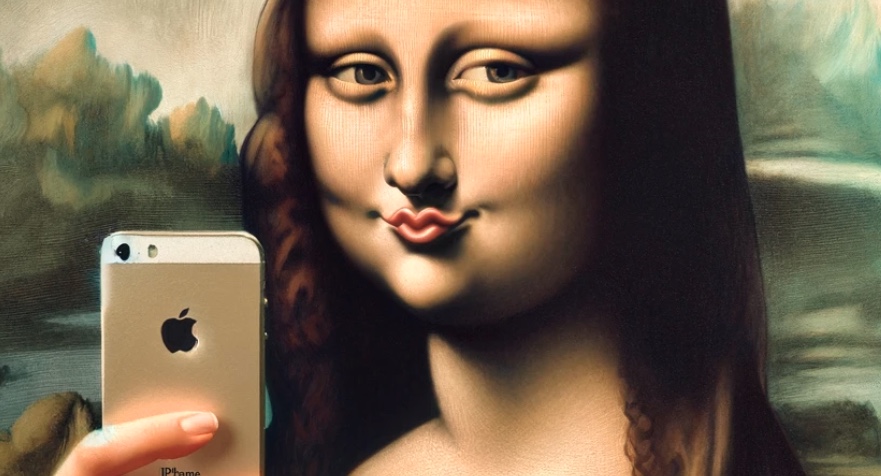










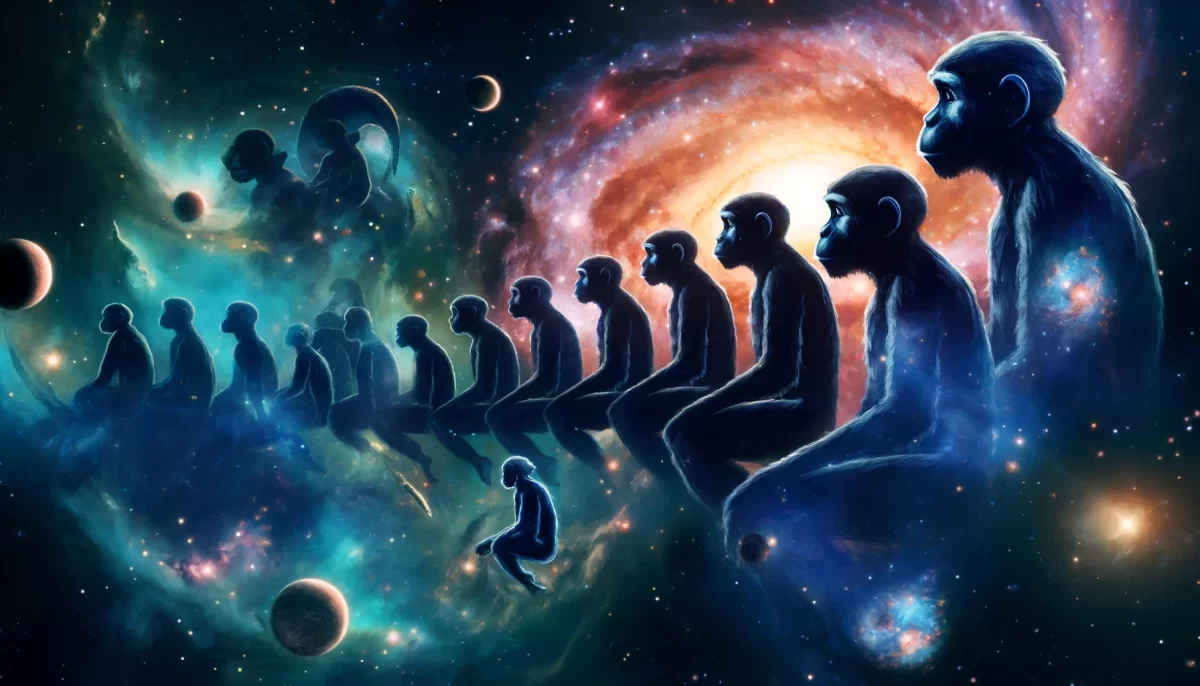


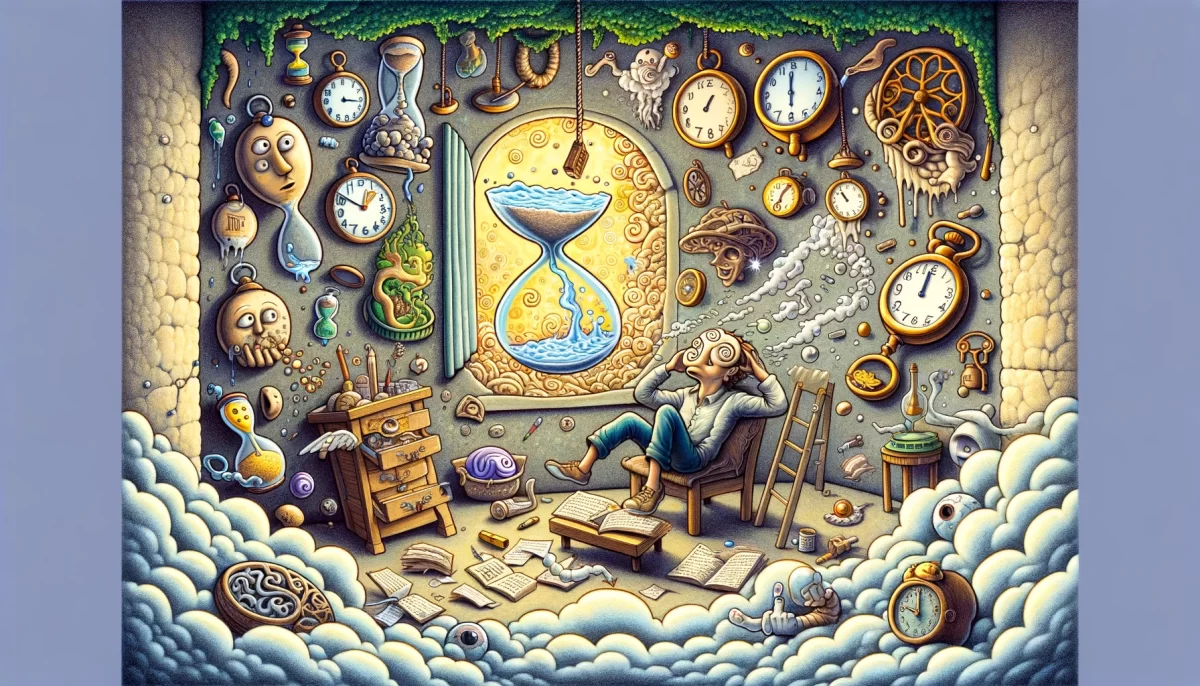
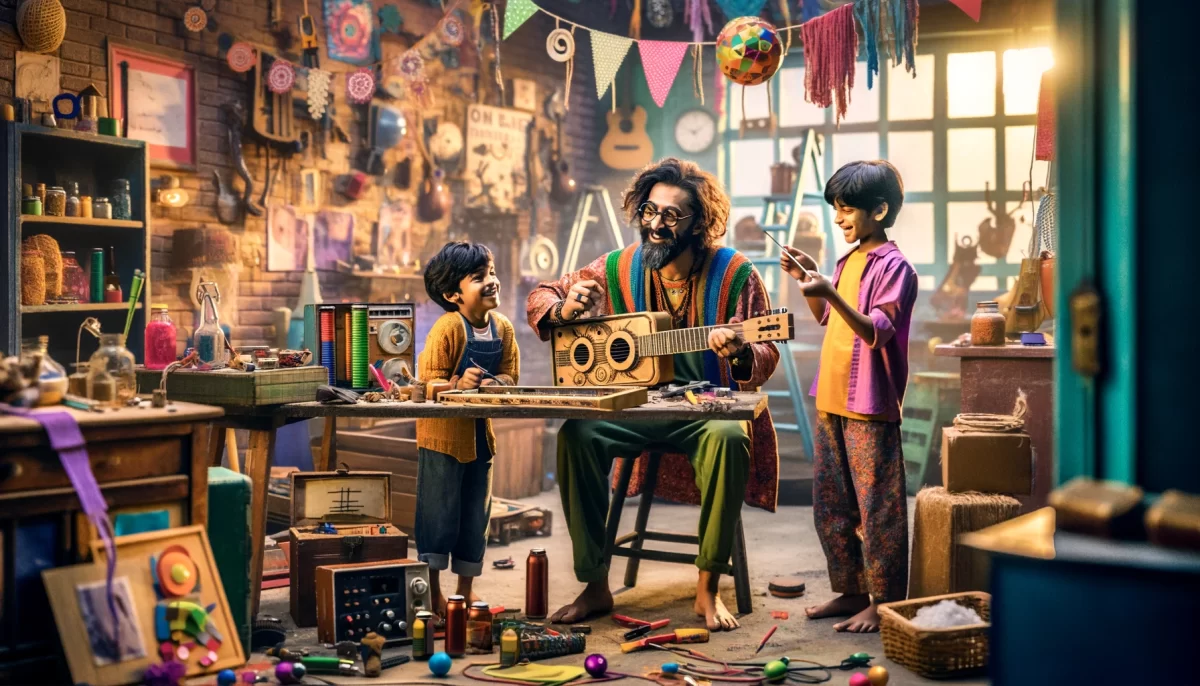
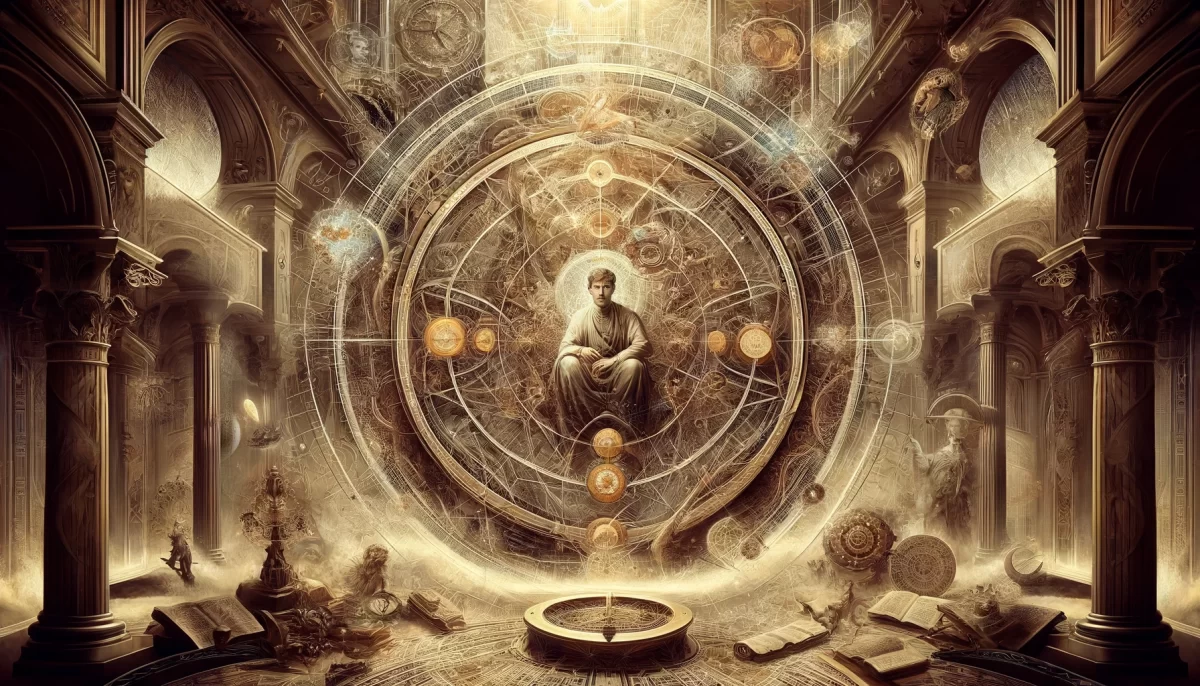
Leave a Reply